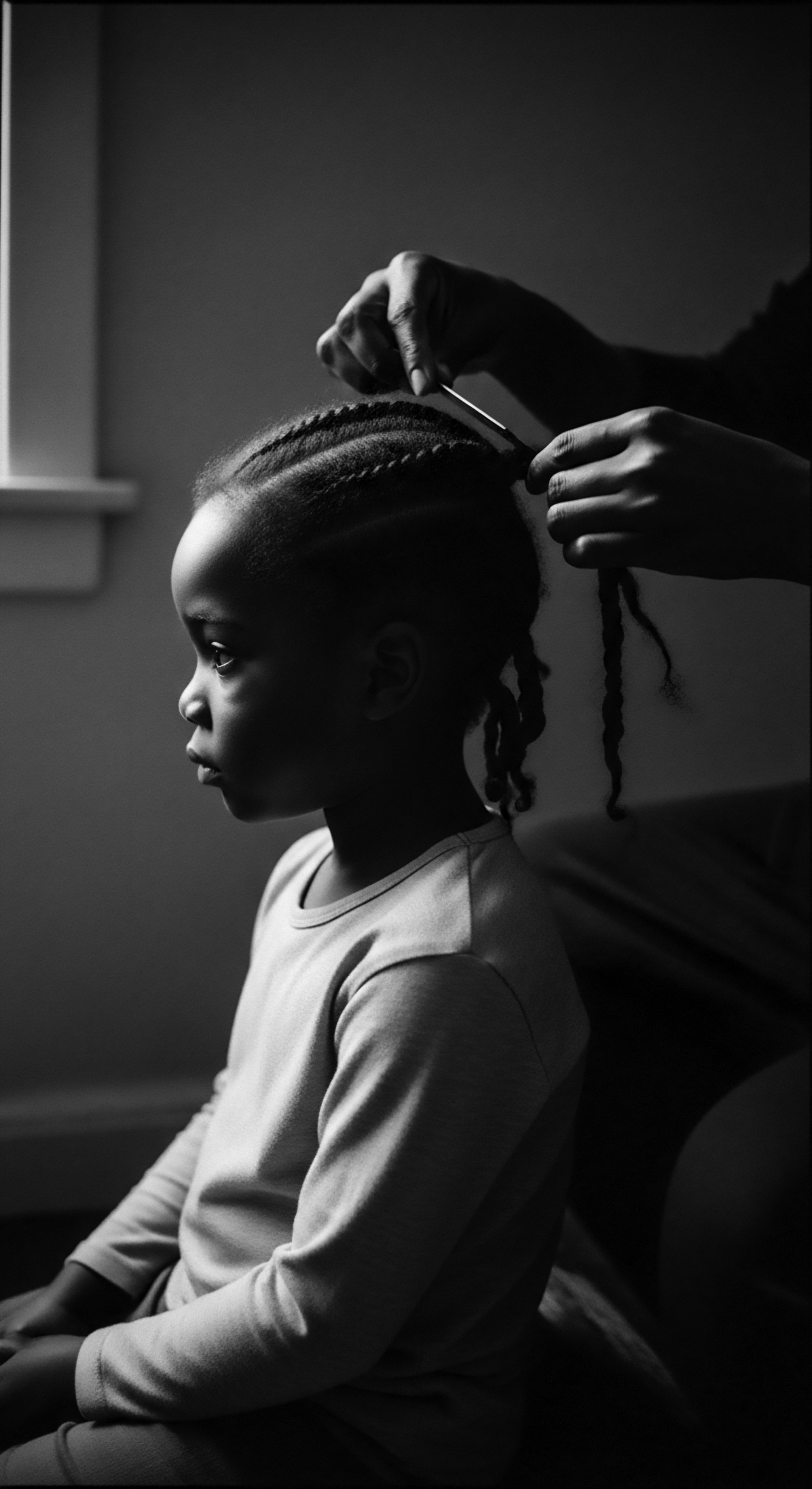
Roots
There are whispers on the wind, stories carried through countless generations, of hair that stands as a living chronicle. For those of us with textured hair, our strands embody a profound connection to lineage, a visible testament to resilience and beauty. This understanding goes beyond surface observations, extending into the very fibers of our being, echoing with the wisdom of those who came before. As we contemplate the remarkable strength of textured hair, it is natural to turn our gaze to the earth’s timeless offerings, particularly the ancient grains that nourished our forebears across continents and through trying passages.
The relationship between these ancient agricultural staples and the vitality of our hair is not simply anecdotal. It is a story etched in the very biology of the hair strand, a tale of how foundational elements provided by the earth supported not only human life but also the very structure that would come to symbolize identity and survival. The sustenance derived from grains like Sorghum, Millet, and Fonio shaped bodies, nurtured growth, and contributed to the inherent robustness of hair, preparing it, perhaps, for the complex styling and protective measures that would become cornerstones of cultural expression.
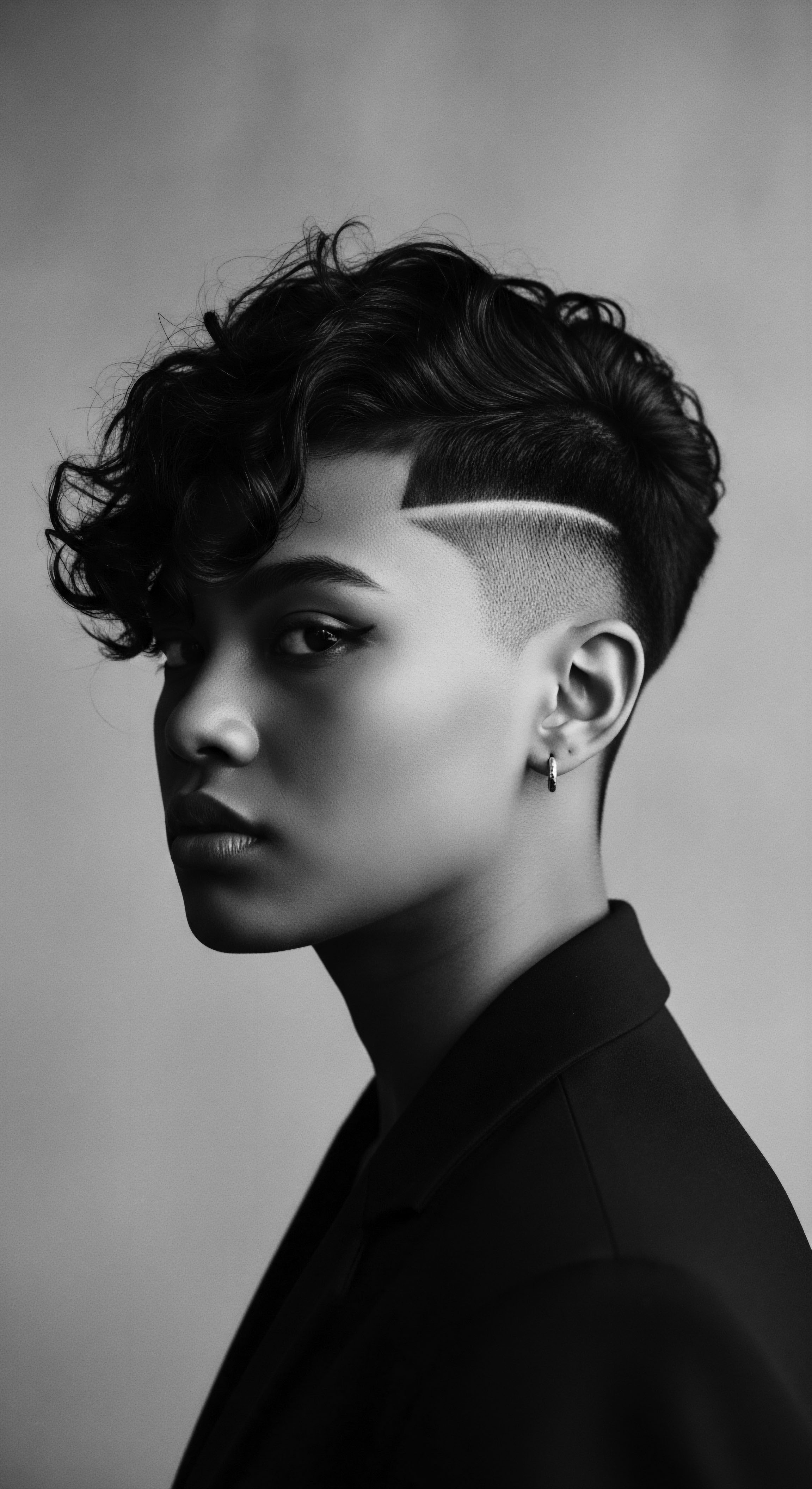
Anatomy of Textured Hair Ancestral Perspective
To truly grasp the significance of ancient grains, one must first comprehend the unique blueprint of textured hair. Unlike its straighter counterparts, textured hair possesses an elliptical cross-section, which can vary from oval to flattened ribbon shapes, contributing to its distinct curl patterns. The journey of the hair shaft from the follicle is a spiral, creating twists and turns that define coils, curls, and waves.
These formations, while stunning in their artistry, also introduce points of structural vulnerability where the cuticle, the hair’s protective outer layer, may lift. The internal protein matrix, primarily Keratin, forms the core strength, providing the elasticity and tensile properties that allow textured hair to stretch and rebound.
Consider the ancestral environments where these hair types flourished. In sun-drenched landscapes and humid climates, robust hair was not merely an aesthetic preference; it was an adaptive trait. Ancestral diets, often rich in unrefined grains, provided the building blocks for such strength.
The protein content, the array of B vitamins, and the essential minerals found in these grains supplied the cellular machinery responsible for producing strong keratin and maintaining healthy follicular activity. Our understanding of these ancient dietary patterns shows a symbiotic relationship, one where the earth provided sustenance, and in turn, the body created hair capable of thriving in its environment, a beautiful reflection of inherent fortitude.
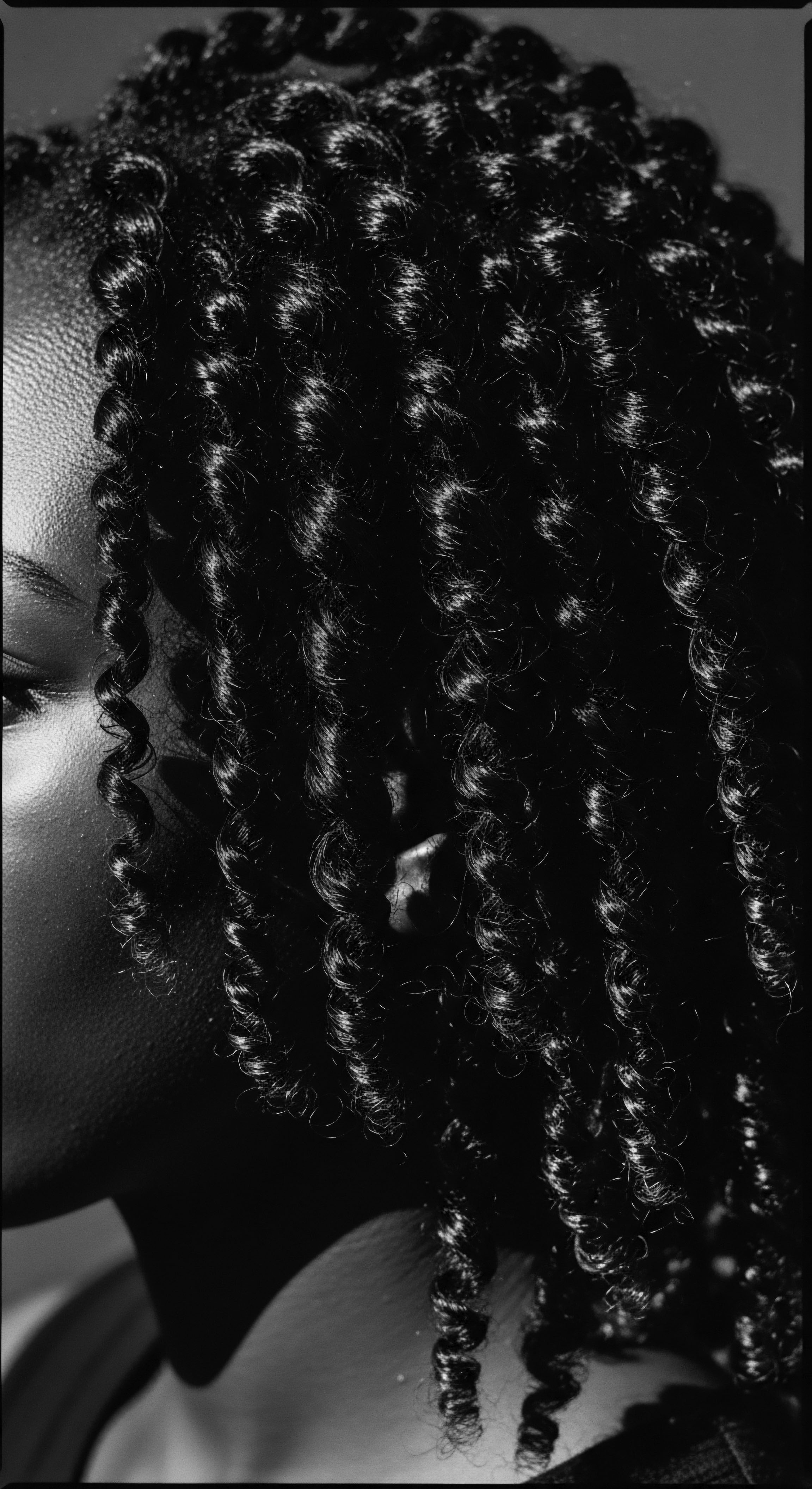
What Role Did Ancient Grains Play in Hair Nourishment?
Ancient grains served as nutritional powerhouses, delivering a spectrum of components vital for hair formation and strength. These include elements like Amino Acids, the fundamental units of protein, necessary for keratin synthesis. They also brought forth an abundance of B Vitamins, particularly biotin and niacin, which play a direct role in cellular metabolism within the hair follicle, supporting growth and preventing fragility. Minerals, such as Iron, Zinc, and Magnesium, also present in these grains, are indispensable for healthy blood circulation to the scalp and for enzymatic reactions involved in hair protein production.
The fiber content in these grains, while not directly incorporated into the hair itself, contributed to overall digestive wellness. A healthy gut biome aids in nutrient absorption, ensuring that the body could optimally uptake and direct the necessary elements to fast-growing cells, such as those found in hair follicles. This holistic dietary approach, passed down through generations, underscores an understanding that outer radiance stems from inner vitality, a wisdom deeply woven into ancestral care practices.
Ancient grains provided essential nutrients that built the inherent strength and resilience seen in textured hair, connecting dietary customs to physical attributes.

Understanding Hair Structure Across Different Peoples
Hair structure varies widely across human populations, a testament to the vastness of human diversity. For peoples of African descent, this spectrum is especially broad, ranging from loose waves to tightly wound coils. Each variation, however, shares commonalities in its inherent need for protein, moisture, and careful handling.
The concept of hair type, often categorized by number and letter systems today, began much earlier, in observations made within communities regarding how hair grew, behaved, and responded to care. Traditional nomenclature, often tied to descriptive terms or societal roles, predates modern classifications, carrying with it cultural meaning and historical significance.
For instance, some West African communities historically spoke of hair based on its density or its ability to hold protective styles, rather than a microscopic examination of its cross-section. The ability of hair to withstand the tension of braiding or twisting, crucial for protective styles, speaks volumes about its inherent strength, which was often supported by a diet rich in grains and local provisions. This cultural understanding of hair strength was intrinsically linked to its functionality within traditional styling practices, emphasizing durability and health over a mere visual appearance.
| Ancient Grain Sorghum |
| Nutritional Contribution Rich in B vitamins, iron, protein, antioxidants. |
| Ancestral Significance Staple in many African diets, contributing to overall health and cell integrity, including hair follicles. |
| Ancient Grain Millet |
| Nutritional Contribution Source of protein, magnesium, phosphorus, niacin. |
| Ancestral Significance Drought-resistant crop, sustained communities, supported bone health and metabolism, crucial for healthy skin and hair. |
| Ancient Grain Fonio |
| Nutritional Contribution Abundant in amino acids, calcium, magnesium, zinc, B vitamins. |
| Ancestral Significance Called "Grain of Life" in West Africa, known for strengthening hair and nails, aiding general wellbeing. |
| Ancient Grain These grains formed the nutritional bedrock for ancestral communities, indirectly supporting the development and strength of textured hair over millennia. |

How Did Ancestral Diets Influence Hair Resilience?
The sheer resilience of textured hair, so often celebrated in our communities, finds part of its origin in ancestral dietary patterns. These diets, often comprising a variety of locally grown grains, legumes, and indigenous vegetables, delivered a full spectrum of macro and micronutrients. The consistent intake of nutrient-dense foods meant that the body received a steady supply of building blocks for all tissues, including the rapidly regenerating cells of the hair matrix. It was a lifestyle where food was medicine, and sustenance directly translated to physical robustness.
Consider the story of enslaved African women during the transatlantic passage. It is documented that these women, in an incredible act of resistance and foresight, hid Rice, Millet, Sorghum, and other precious seeds within their intricate braided hairstyles to carry them across the ocean to the Americas. This act, steeped in ingenuity and a profound determination to preserve their heritage, highlights the deep cultural significance of hair as a vessel for survival and tradition.
The grains, hidden within the very coils of their hair, would become the foundation for sustenance gardens in a new, unfamiliar world, securing not only physical survival but also a botanical legacy, a culinary connection to home. This poignant historical example underscores how ancient grains, held close to textured hair, were quite literally the seeds of survival and cultural continuity, physically linked to the strength of those who carried them, both body and spirit.

Ritual
From the elemental biology of the strand, we move to the living traditions, the tender thread of care that connects generations. The use of ancient grains, initially a matter of dietary sustenance, began to weave itself into the external practices of hair care. While direct topical application of ancient grains in their raw form for hair strength might not be the most common thread in every historical context, their indirect influence through nourishing the body was undeniable. Furthermore, the knowledge systems that cultivated these grains often extended to broader herbal and plant-based applications for skin and hair health, linking internal wellbeing to external care.
Ancestral practices regarding textured hair were rarely about quick fixes. They comprised thoughtful, deliberate rituals designed to protect, maintain, and adorn. These practices, rooted in community wisdom and passed through elder hands to younger ones, emphasized careful handling, deep conditioning, and protective styling. The inherent qualities of ancient grains, such as their protein content or mineral composition, would have contributed to the overall strength of hair that was nurtured through such comprehensive approaches, allowing it to withstand the rigors of elaborate braiding or twisting, styles that often served both aesthetic and practical purposes.
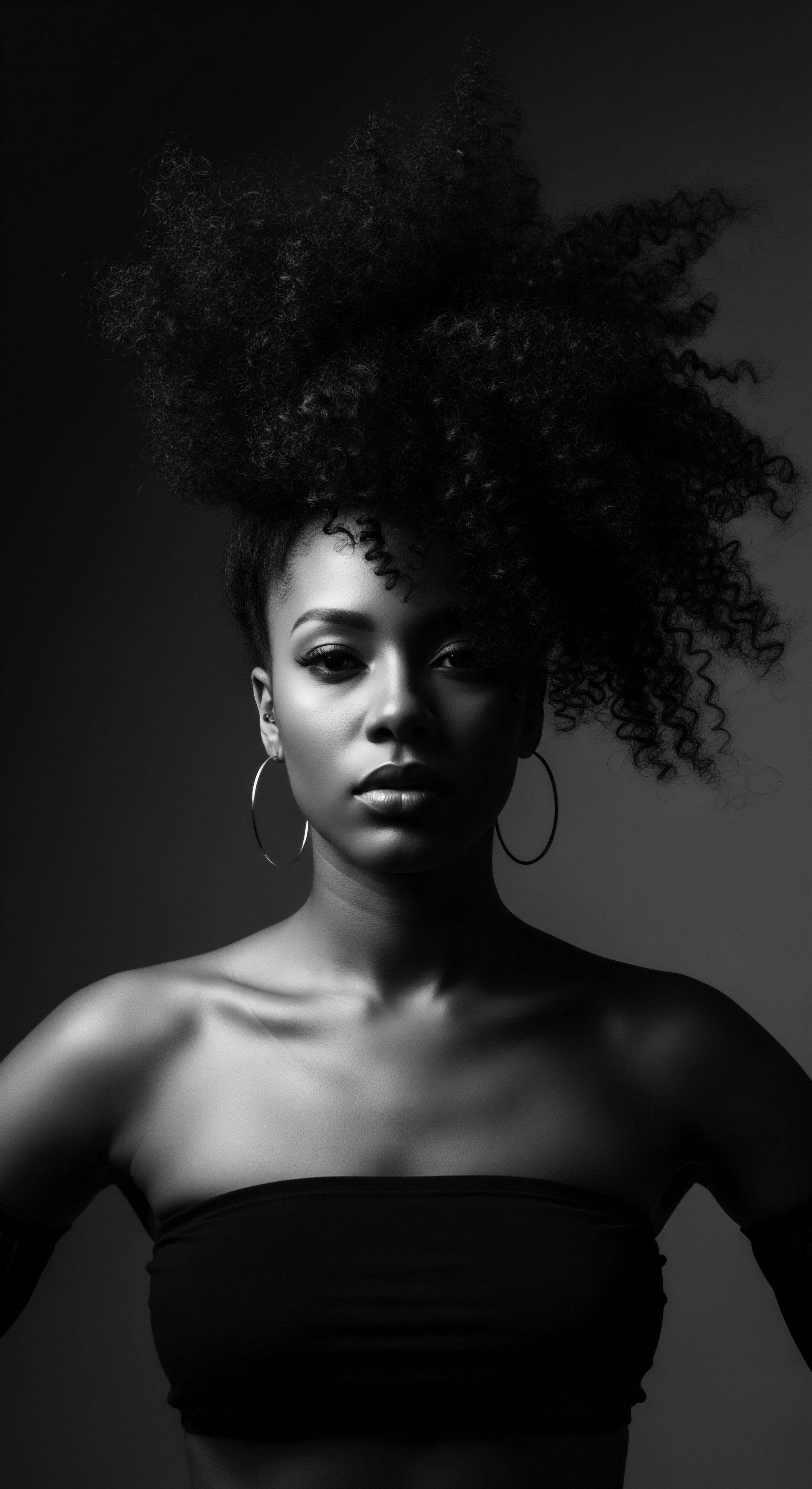
Protective Styling Ancestral Roots
Protective styling, a hallmark of textured hair care today, possesses a long and storied past, deeply rooted in African and diasporic communities. These styles, including Braids, Twists, and Locs, were far more than decorative. They served vital functions ❉ safeguarding the hair from environmental elements, minimizing breakage, retaining moisture, and communicating identity, status, or tribal affiliation.
The ability of hair to hold these intricate formations depended heavily on its underlying strength and elasticity. A well-nourished body, sustained by diets rich in ancient grains, would naturally produce hair that was more pliable and less prone to brittleness, thereby allowing for the creation and longevity of these culturally significant styles.
The continuity of these practices, even through displacement and adversity, speaks to their profound importance. The memory of styling techniques, the understanding of hair’s needs, and the wisdom of using what the earth provided, all persisted. The careful sectioning, the precise interlacing of strands, and the communal aspect of hair styling sessions were, and remain, sacred rituals. They speak of connection, of shared heritage, and of the enduring power of tradition to shape both individual appearance and collective identity.

Were Ancient Grains Applied Topically for Hair Benefits?
While the primary contribution of ancient grains to hair strength was nutritional, historical accounts and ethnobotanical studies hint at broader applications of plant-based materials. Although direct “grain paste” applications might be less documented than, say, certain plant extracts or clays, the comprehensive nature of ancestral wellness suggests an intuitive understanding of the benefits derived from nutrient-rich sources. Sorghum, for instance, has been noted for its B vitamins, which support hair growth and skin health, and its antioxidants. While mainly consumed, its byproducts or specific preparations could have been integrated into topical remedies, similar to how other plant components were utilized.
The wisdom of ancestral care often involved resourceful utilization of available plants. If a grain offered known internal benefits, it is plausible that its derivatives or preparations might also have found their way into external remedies. This aligns with a holistic worldview where the boundaries between food, medicine, and cosmetic were often fluid. The focus was always on overall health, with hair condition serving as a visible indicator of internal balance.
- Sorghum ❉ Historically consumed as a staple, its nutrient profile suggests internal benefits for hair health through diet.
- Millet ❉ A resilient crop that provided foundational nutrition, indirectly supporting strong hair fibers.
- Fonio ❉ Revered in West Africa for its ability to strengthen hair and nails, primarily through dietary intake.
- Rice ❉ Known for its use in fermented water rinses in some traditions, linking grain byproducts to topical application.
The deep cultural practice of protective styling relies on hair strength, a quality significantly influenced by ancestral diets rich in ancient grains.

Holistic Influences on Hair Health Through Grain Use
The concept of hair health in ancestral contexts was rarely isolated. It was deeply interconnected with overall wellbeing, environmental factors, and community practices. The availability and use of ancient grains, thriving in specific climates, meant that communities had consistent access to foundational nutrition. This consistent access contributed to generational health, which in turn supported the robust growth of hair.
Moreover, the cultivation and preparation of these grains often involved communal labor, reinforcing social bonds and shared knowledge. The wisdom gleaned from the earth, from cultivating and consuming these grains, extended to other areas of life, including traditional remedies. The very act of sustaining a community through these grains became a part of the larger tapestry of ancestral wisdom, influencing not only diet but also a collective approach to health and beauty.
The wisdom embedded in African hair traditions, passed down through generations, often involved methods that intuitively worked with the hair’s natural characteristics. Whether it was through meticulous braiding techniques that minimized breakage or the use of specific plant-based cleansers and moisturizers, these rituals contributed to the longevity and strength of textured hair. The strength of the hair itself, supported by the nutritional gifts of ancient grains, made these enduring styling practices possible, forming a continuous cycle of care and cultural expression.

Relay
The current understanding of textured hair strength builds upon a foundation laid by centuries of ancestral wisdom and practical application. While modern scientific inquiry provides detailed biochemical explanations, it often validates principles long understood within communities that cared for these unique hair types. The journey of ancient grains from being mere sustenance to recognized contributors to hair vitality is a powerful testament to the enduring interplay between tradition, biological understanding, and cultural continuity.
Researchers are increasingly exploring the components of ancient grains that contribute to cellular health and protein synthesis, directly aligning with the historical observations of robust hair growth in populations with grain-rich diets. This scientific scrutiny allows us to understand the “why” behind the long-held “what,” creating a richer, more comprehensive narrative around hair strength and its deep historical roots.
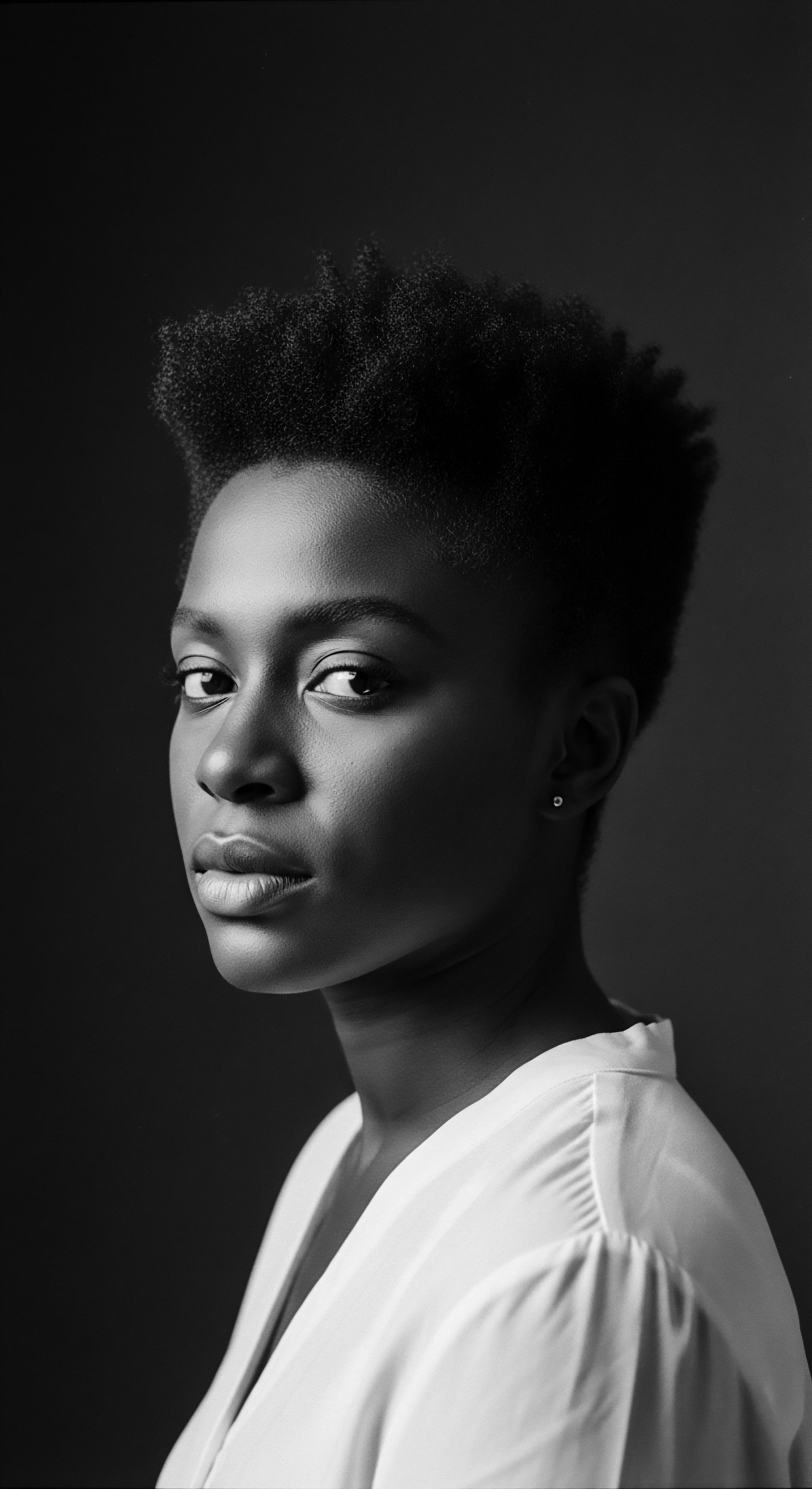
How Do Grain Proteins Fortify Hair Fibers?
Hair is primarily composed of Keratin Proteins, making protein intake a fundamental aspect of hair strength. Ancient grains, particularly those like sorghum and fonio, are notable for their considerable protein content. When consumed, these proteins are broken down into their constituent Amino Acids during digestion. These amino acids are then reassembled by the body to synthesize new proteins, including those required for hair growth and repair.
For textured hair, which can be more prone to breakage due at its numerous twists and turns, a consistent supply of quality protein is important. Sufficient protein allows the hair follicle to produce robust keratin chains, which contribute to the hair shaft’s tensile strength and elasticity. Without adequate protein, hair can become brittle, weak, and susceptible to damage. The resilience observed in many ancestral textured hair traditions points to dietary practices that supplied these vital building blocks consistently, enabling hair to thrive under various styling and environmental conditions.
For example, sorghum contains a significant amount of plant-based protein, with a half-cup serving offering approximately 10 grams. This protein is essential for the continuous growth, repair, and maintenance of various tissues, including skin and hair. The presence of such a substantial protein source in ancestral diets would have directly supported the structural integrity of hair, allowing it to withstand manipulation and remain strong over time.

The Science of Ancient Grains and Hair Health
Beyond protein, ancient grains contain a complex array of micronutrients and plant compounds that exert beneficial effects on hair health. B Vitamins, such as biotin (B7), niacin (B3), and pantothenic acid (B5), are well-documented for their roles in cellular metabolism and energy production, which are crucial for the rapid cell division occurring in hair follicles. Many ancient grains provide these vitamins in significant quantities.
Minerals like Iron, Zinc, and Magnesium, also abundant in these grains, contribute to a healthy scalp environment and strong hair growth. Iron is essential for oxygen transport to hair follicles, while zinc plays a role in protein synthesis and cell division. Magnesium participates in over 600 biochemical reactions in the body, including those related to protein metabolism and energy production that impact hair vitality.
The antioxidants present in grains, such as flavonoids and phenolic acids, can help mitigate oxidative stress, protecting hair follicles from environmental damage. This biochemical synergy underscores how ancient diets inadvertently provided a holistic nutritional support system for hair, a system that modern science now helps us understand in greater detail.
Modern research validates the historical efficacy of grain-rich diets, showing how their proteins and micronutrients directly contribute to robust hair health.
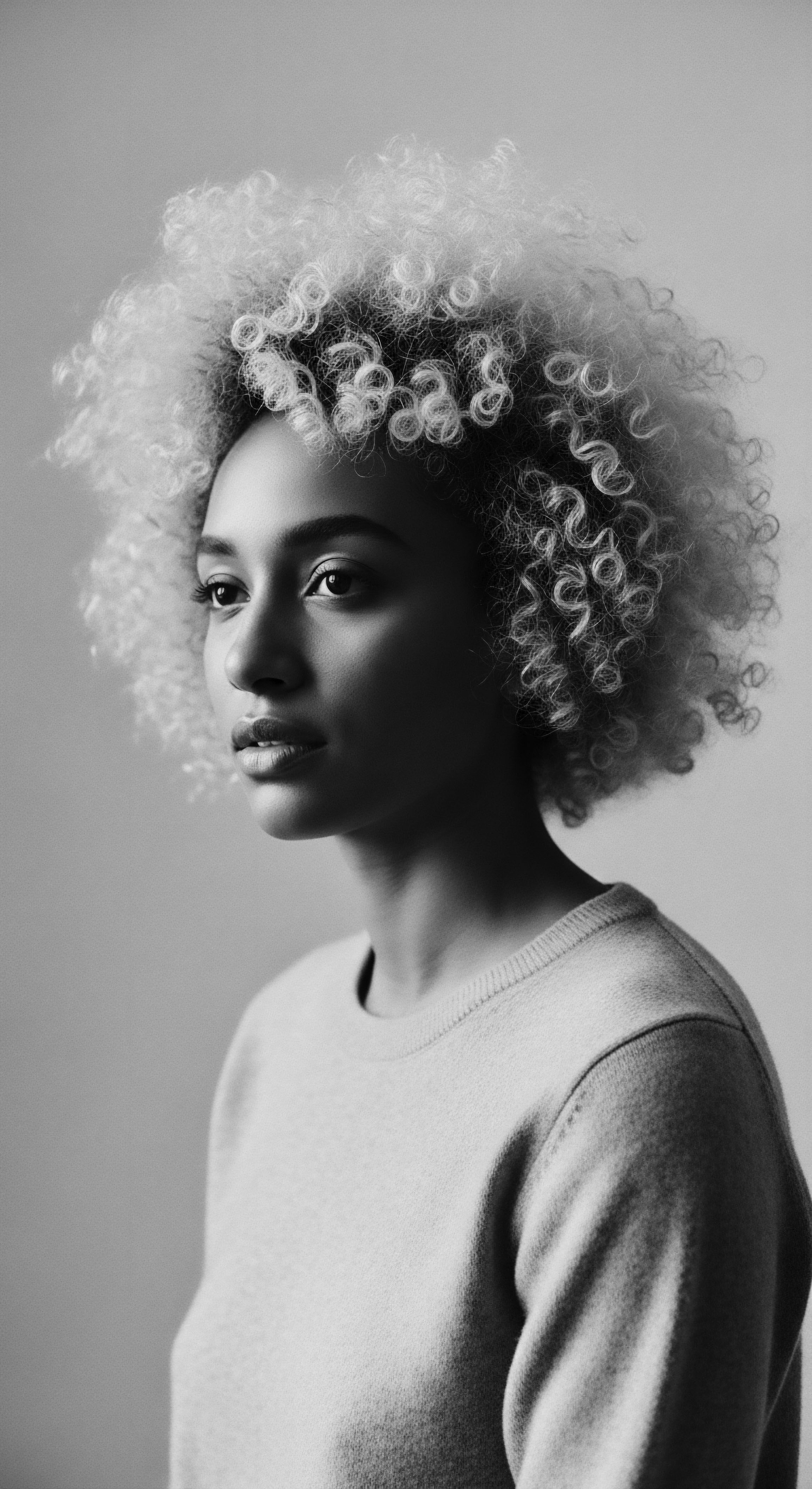
Considering Grain Byproducts in Hair Care Heritage
While direct consumption of ancient grains was the primary route to internal hair strength, ancestral wisdom often extended to the utilization of grain byproducts or preparations in topical applications. Though not always the whole grain itself, substances derived from grains could still carry beneficial compounds. The practice of using fermented rice water, for instance, has a long history in certain Asian cultures, and similar principles could have informed practices in African communities. The fermentation process enhances the concentration of vitamins, amino acids, and antioxidants, which, when applied to hair, can provide a conditioning and strengthening effect.
The wisdom here speaks to a broader principle ❉ the interconnectedness of resources. Nothing was wasted. What nourished the body internally might also offer external benefits.
This resourcefulness, born of necessity and deep ecological understanding, shaped comprehensive care practices that honored the gifts of the earth in every possible way. The legacy of these practices speaks to a profound respect for natural ingredients and a nuanced understanding of their varied uses.
| Nutrient Category Proteins/Amino Acids |
| Ancient Grain Examples Sorghum, Fonio, Millet |
| Function for Hair Strength Fundamental building blocks for keratin, promoting hair structure and tensile strength. |
| Nutrient Category B Vitamins (Biotin, Niacin) |
| Ancient Grain Examples Sorghum, Millet, Fonio |
| Function for Hair Strength Support cellular metabolism in hair follicles, aid in growth, and help maintain healthy scalp conditions. |
| Nutrient Category Minerals (Iron, Zinc, Magnesium) |
| Ancient Grain Examples Sorghum, Fonio |
| Function for Hair Strength Essential for oxygen transport to follicles, protein synthesis, and enzymatic reactions crucial for hair vitality. |
| Nutrient Category Antioxidants (Flavonoids, Phenolics) |
| Ancient Grain Examples Sorghum (especially darker varieties) |
| Function for Hair Strength Protect hair follicles from oxidative stress and environmental damage, supporting overall hair health. |
| Nutrient Category The rich nutrient synergy found in ancient grains provided comprehensive support for hair, from its foundational protein structure to its cellular protection. |
The relay of knowledge, from ancestral observation to modern scientific validation, provides a deeper appreciation for the ingenuity of past practices. It helps us see that the strength of textured hair is not merely a genetic lottery but a legacy partly cultivated through generations of thoughtful nutrition and attentive care, where grains were not simply food but a vital component of holistic wellbeing.

Reflection
As we trace the lineage of textured hair strength, from the elemental composition of the strand to the intricate rituals of care, a powerful truth emerges. The connection between ancient grain use and the vitality of our coils, curls, and waves is not a simple cause and effect; it is a resonant chord in the larger symphony of our heritage. It speaks of a time when the earth provided, and human hands, guided by deep wisdom, understood how to sustain not just life, but also identity, beauty, and resilience.
The story of ancient grains and textured hair strength is a narrative of profound continuity. It reminds us that the robustness of a strand often mirrors the fortitude of a people. The seeds carried across vast oceans, secreted within the intricate patterns of braided hair, were more than just agricultural promise.
They were symbols of hope, vessels of survival, and tangible links to a past that refused to be severed. This act, echoing across centuries, encapsulates the very essence of “Soul of a Strand” – the understanding that our hair carries history, knowledge, and an unbreakable spirit.
In every gentle detangle, every nurturing application, every thoughtful style, we honor this legacy. We honor the grains that sustained bodies and built strong fibers. We honor the hands that braided in foresight and the minds that held fast to ancient wisdom.
The strength we seek for our hair today is not a new aspiration; it is an enduring echo, a continuation of a profound heritage. It is a heritage that invites us to look back, learn, and then step forward, unbound and radiant, carrying the wisdom of generations in every glorious helix.

References
- Essien, I. (2024). Overseeding ❉ Botany, Cultural Knowledge and Attribution. Blackwood Gallery, University of Toronto Mississauga.
- Carney, J. A. (2013). African Ethnobotany in the Americas. Springer Science+Business Media New York.
- Botanica Life Foundation. (n.d.). The Sorghum and Its Uses .
- Ghana Business News. (2019). Rediscovering Fonio Grain – The Gluten Free Superfood from West Africa .
- Afro Gist Media. (2017). How To Grow Long Healthy Hair ❉ 10 Ancient Secrets Africans Swear By .
- Carney, J. A. & Rosomoff, R. N. (2009). In the Shadow of Slavery ❉ Africa’s Botanical Legacy in the Atlantic World. University of California Press.
- René Furterer. (n.d.). Sorghum .
- 22 Ayur. (n.d.). The Ancient Natural Ways of Hair Care Across Continents .
- Sellox Blog. (2021). Ancient African Hair Growth Secrets For Healthy Hair .
- Healthline. (n.d.). What Is Sorghum? A Unique Grain Reviewed .
- Ehsani, R. (2025). Sorghum Might Be the Most Underrated Superfood—Here’s Why Nutrition Experts Love It .
- Van Wyk, B. E. et al. (2017). The Botanical, Chemical and Ethnobotanical Diversity of Southern African Lamiaceae .
- Ayanase. (2024). Powerful African and Asian Herbs for Hair Growth ❉ Nature’s Remedies .
- Carney, J. A. (2003). African Traditional Plant Knowledge in the Circum-Caribbean Region. Journal of Ethnobiology, 23(2).
- WebMD. (2024). Sorghum ❉ Nutrition and Health Benefits .
